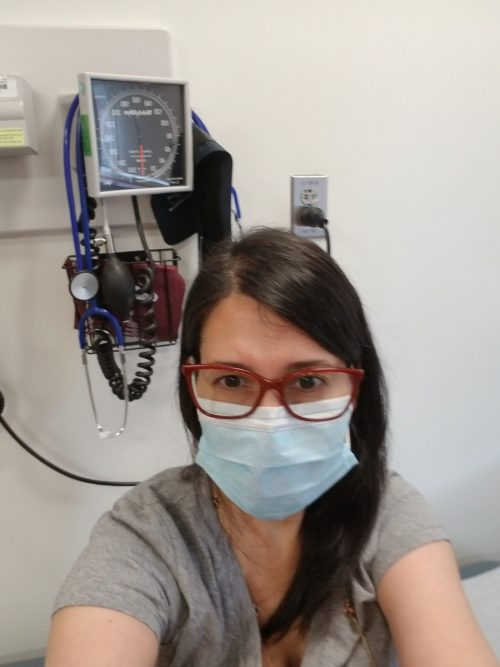Recently Approved NMO Medications Are a Light on the Horizon

When I was diagnosed with neuromyelitis optica (NMO) in 2012, the U.S. Food and Drug Administration (FDA) hadn’t yet approved any medications specifically to treat this disease. However, doctors could select various therapies to help patients prevent or deal with attacks. When NMO patients had an attack, doctors treated them with steroids and plasma exchange.
Every time I had an attack, I was treated with steroids. I received large amounts through IVs, which caused seizures. Unfortunately, I didn’t have another treatment choice. To decrease the seizures, doctors administered sedatives that made me dizzy.
Physicians once tried a plasma exchange, but it didn’t work for me. They couldn’t even finish it because the side effects started right away. My heart rate shot up, and I was sweating and shivering at the same time. It was a terrifying feeling.
After I recovered from my NMO attacks, doctors tried to figure out the right preventive treatment for me. In those years, the most recommended first-line therapies were azathioprine, mycophenolate mofetil, and Rituxan (rituximab). If patients didn’t respond to them, doctors used methotrexate, mitoxantrone, and cyclosporine as second-line therapies because there was limited clinical data; additionally, mitoxantrone has possible toxicity.
All of these preventive medications suppress immune function. Some deplete B-cells, and others deplete both the T- and B-cells. Thankfully, I responded positively to rituximab, one of the first-choice medications.
Currently, there are three FDA-approved medications for NMO, but you need to test positive for anti-Aquaporin-4 antibodies to be able to take them. Aquaporin-4, a water-channel protein in the central nervous system, particularly the brain and spinal cord, is targeted and attacked by the immune system in patients with NMO.
Although these medications are only approved for a portion of the NMO population, their recent approval is still good news. These therapies are a light on the horizon for finding a cure or treatment for all NMO patients. A few years ago, there weren’t any treatments for anyone with NMO.
In June 2019, Soliris (eculizumab) was the first treatment for NMO approved by the FDA. It reduces the risk of relapse by up to 94%. What I do not like about this treatment is that it is given via infusion every two weeks. This means that patients can’t travel far away for more than two weeks because they’ll need to continue treatment. For me, that would feel like being on state parole after committing a crime.
What I like about this infusion is how long it takes to infuse. Surprise! It takes only 35 minutes and, with doctor approval, can be infused at home.
The second medication, approved last June, is Uplizna (inebilizumab-cdon). A clinical trial revealed 89% of participants with NMO were relapse-free through 28 weeks. I like that it is administered every six months. This gives me a sense of freedom. Each infusion lasts about an hour and a half. This short duration reduces the feeling of being tied to an infusion chair for hours.
The third, approved last August, is Enspryng (satralizumab-mwge), which reduces the risk of relapse by up to 78%. It’s administered once a month via subcutaneous injection. This excites me. My veins have been so abused that I would sing for this injection in a heartbeat.
Despite the approval of these three medications and the fact that I tested positive for anti-Aquaporin-4 antibodies, I still use rituximab. Two different doctors said that because this medication has been working for me since 2012, they do not recommend changing it. These three medications are brand new, and no one knows how my body will react. At least with rituximab, we know what to expect.
I like that I only use rituximab twice a year. At first, I did four infusions a year. The first two annual infusions were two weeks apart, and the third and fourth were given six months later, also spaced two weeks apart. Since 2016, I have only gotten one infusion every six months.
I am grateful that at least I have a medication that can prevent new exacerbations. I still have NMO symptoms, such as pins and needles in the left side of my body and the sensation of being unable to entirely feel my legs. However, I am blessed that I am walking, working, and doing my daily routines and activities.
I do not have words to describe the second chance that I was given in this life. There’s a chance out there for you, too. Blessings to all.
***
Note: Neuromyelitis News is strictly a news and information website about the disease. It does not provide medical advice, diagnosis, or treatment. This content is not intended to be a substitute for professional medical advice, diagnosis, or treatment. Always seek the advice of your physician or other qualified health provider with any questions you may have regarding a medical condition. Never disregard professional medical advice or delay in seeking it because of something you have read on this website. The opinions expressed in this column are not those of Neuromyelitis News or its parent company, BioNews, and are intended to spark discussion about issues pertaining to neuromyelitis optica spectrum disorder.







Comments
Shirajul islam
I am a NMO patients.My country name Bangladesh.I have been suffering 20years.